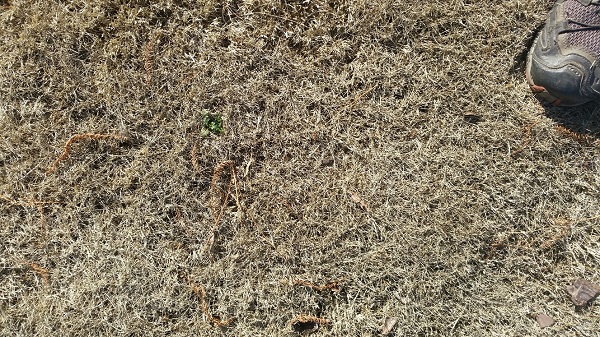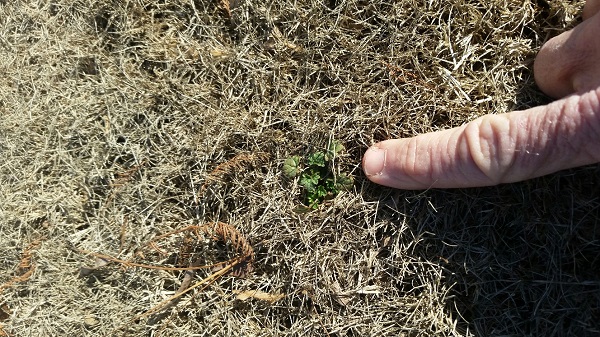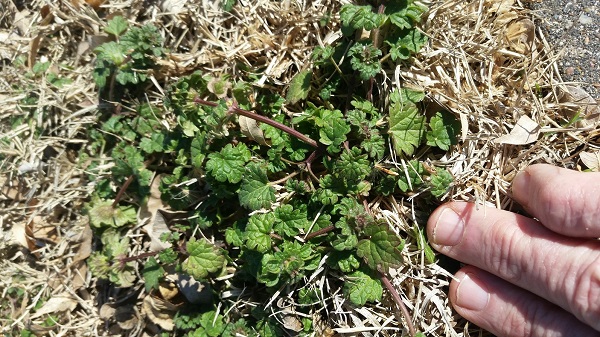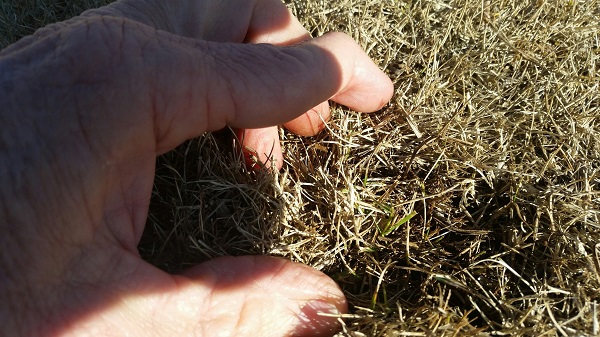The window will be closing soon……
Categories: Lawn Care Pesticide and fertilizer application Plant Care Gone Bad
….for the best way to control those pesky spring weeds in your bermudagrass lawn. By pesky, I mean the henbit, chickweed, bromes, annual bluegrass and others that create the need for several early mowings before the turfgrass begins growing. From a botanical standpoint, these aren’t really spring weeds, they are winter annuals. They germinated last fall and have been waiting patiently for warmer weather, longer days, and rainfall. Even though you may not have even noticed them yet, if you’ve typically had to deal with them in your landscape, you can be assured they are there again this year. Can you spot any weeds in the dormant bermudagrass in this picture?
The weed above is henbit. You likely know as “that purple weed” that overwhelms spring landscapes. The same species of plant is pictured again below. The only difference is the one in the bottom picture is growing close to asphalt on a south-facing slope, its “micro-climate” is warmer.
These weeds are easily controlled if you catch them before they really take off with vigorous growth. Henbit and other broadleaf weeds are controlled with common herbicides containing 2,4-D. However, this product does not control bromes or other grassy weeds like annual bluegrass. You can control these weeds at the same time if you tank mix a low rate of glyphosate herbicide IF the application is made while the bermudagrass turf is still dormant. Applying glyphosate after the bermudagrass has begun greening up will damage the emerging plants. Look very carefully before proceeding with this application.
I apologize for the poor photograph and I had to dig around a bit and brush the top growth away, but you can see green plants just below the canopy. Of course, forecast temperatures in the teens for next week will certainly slow it down, but not for long. Here’s where the talk about proper application comes in. I would be quite comfortable spraying glyphosate on this turf assuming it was done correctly. That means reading the label carefully and following directions. I see folks get in trouble in situations like this because they use a spot sprayer and spray weeds to the point of run-off. That is incorrect. The herbicide runs down into the canopy and causes damage. A light spray of the correct concentration is all that is needed to control the weed.
I encourage clients to control these weeds now for another reason. Careless application of products containing 2,4-D and similar broadleaf herbicides cause a great deal of damage every spring. In my role as an Extension Educator, I see evidence on a regular basis of desirable plant loss due to careless application. A big reason for that (in addition to a blatant disregard for reading instructions) are our Oklahoma winds. These products are very sensitive to drift. In addition, many of our garden and landscape plants are especially sensitive to these herbicides when they begin putting on their new leaves. Treating before things really begin growing eliminates a lot of potential damage.
I mentioned the forecast. With wind, rain, ice, snow, and cold forecast for the next few days, it looks like it is going to be a while before we have another good chance to spray. I’ll be back early next week with some tips on proper sprayer calibration so you will be ready to go when the time is right.




Leave a Reply